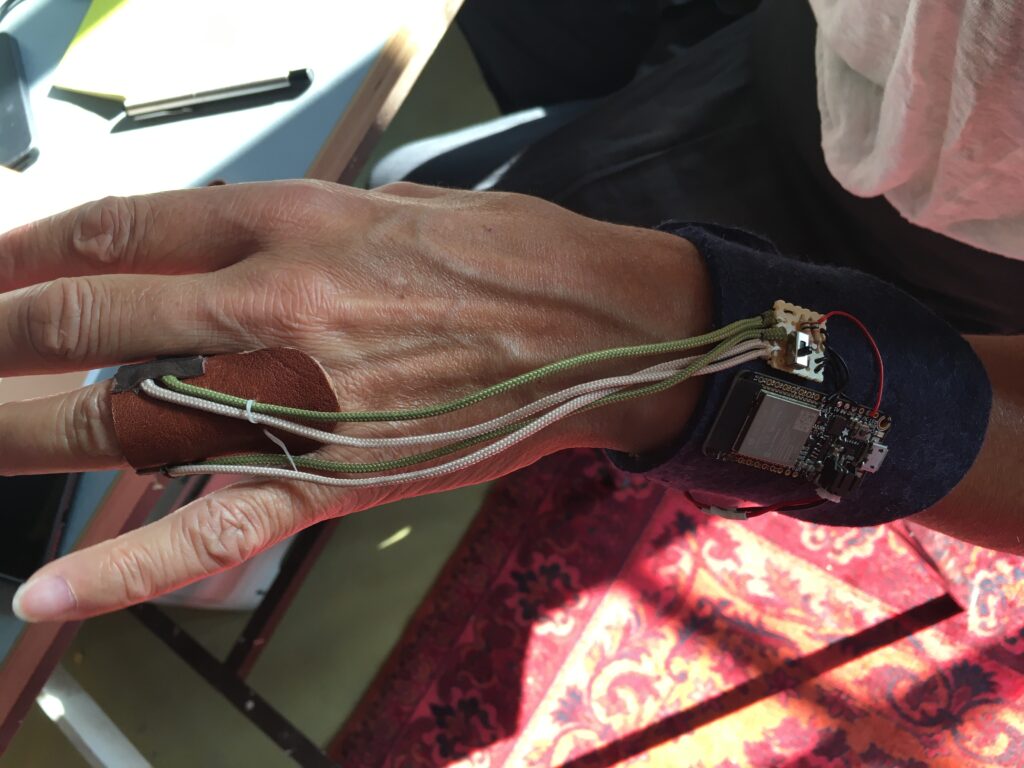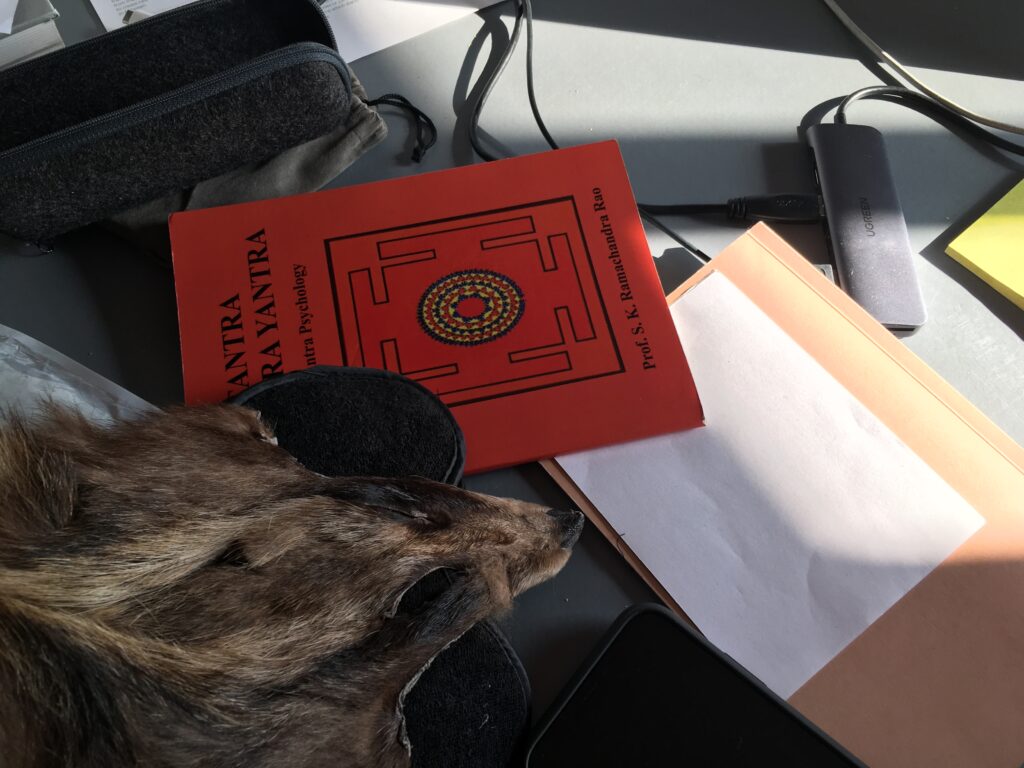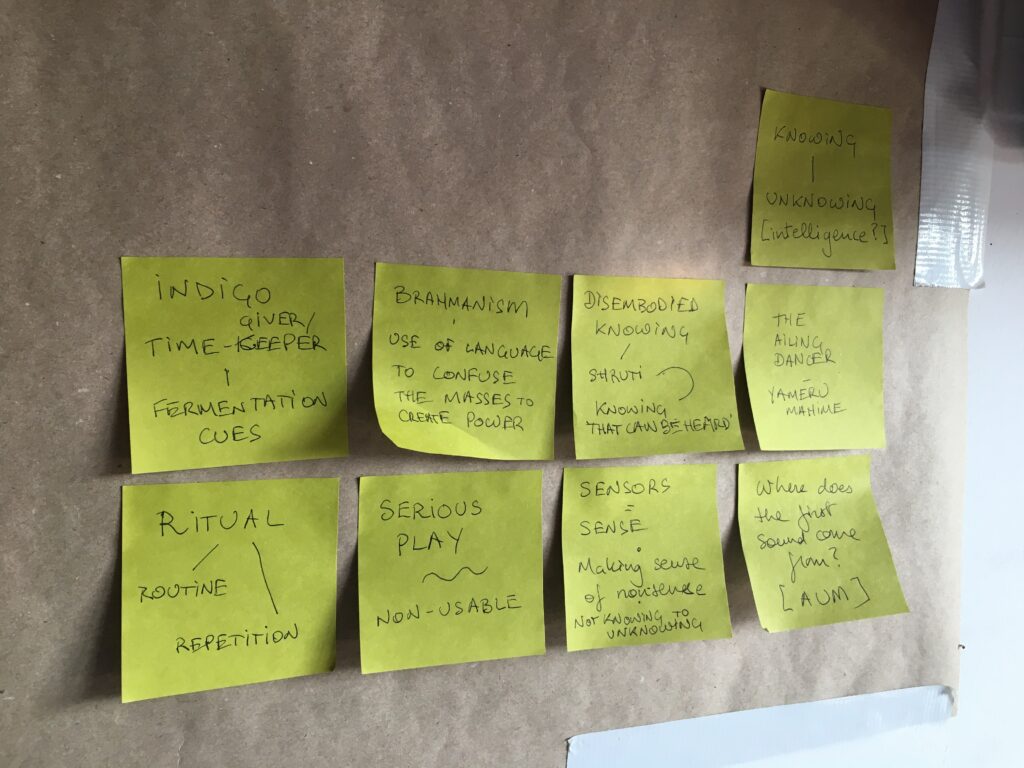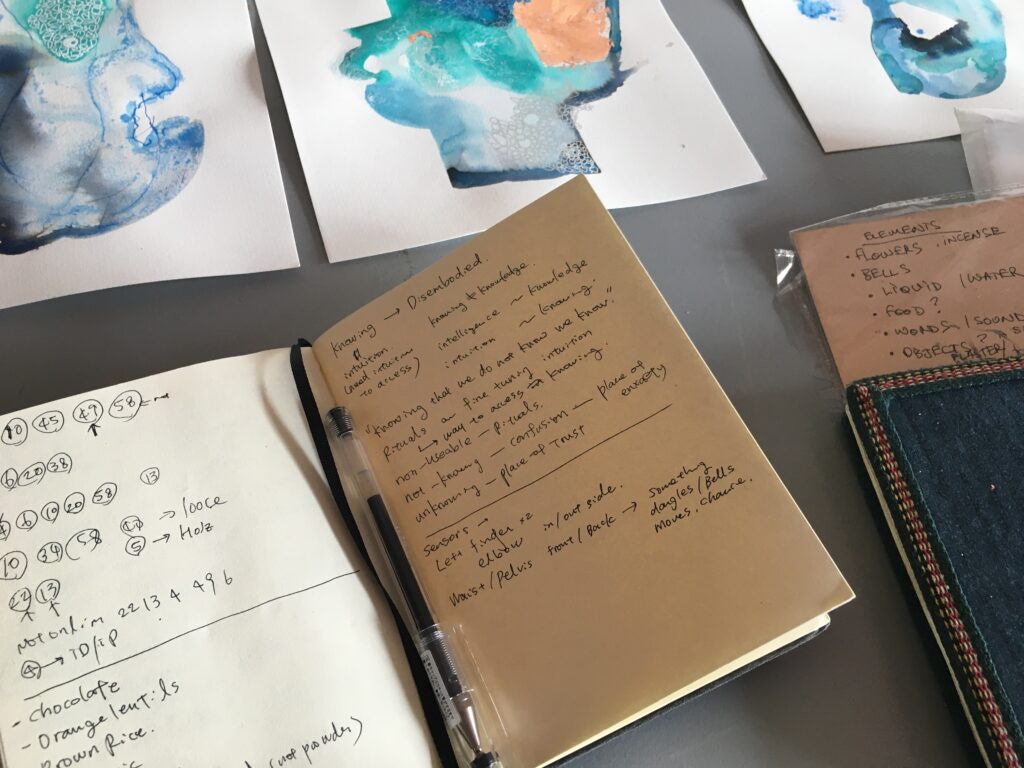
On June 2nd, our artist in residency at the Backsteinboot started.


Initial sensor device Mika has built for this residency. it is a finger/hand movement sensor that detects pinch and open/close gestures. These were the initial choreographic element Dominique wanted to explore.



2 June 2025: wobble, words, repetitions
How could an AI be a tool to help to develop riken no ken* – the detached eye – as an assistant to the creative process, that supports it and encourages adventures into the unknown? And from that a more self-forgetting state of activity of the ‘detached I’.
~
How do you begin? How does anything begin?
This makes me think of what happened with collapse, of going into the studio and feeling frustrated and useless. As an artist, or anyone for that matter wanting to engage with the unknown take some form of technique. Can I help in enabling that technique?
From the improvisation today there were three aspects that stand out in the work with the RAVE voice model:
- Wobbling, bubbling, babbling, drone: the model creates sound that sounds like a low murmur. Like the babbling of a child, this is the ambient aspect of it. Sound but not language, yet. In terms of movement the movement doesn’t need to respond to this babbling. The babbling is just creating some kind of atmosphere, like a cradle that holds the dancers move movement.
- Semblance of words and language: the moments when some more distinct forms of sound resemble words and a language, as if the AI speaking. These would need to have more attack and be more staccato in order to create some sort of reaction, like the kind that Hijikata was working with in his Butoh fu.
It makes me think that language appears through breaking sound apart, and that language creates meaning through this fragmentation of sound.
- Rhythmic repetitions: these seem to happen when there is some modulation through the sensor. In terms of movement it feels like a moment when the movement could actually respond to the rhythm. Butoh dance does not normally respond to sound or rhythm, that’s what other forms of dance and raving do. But it would be a good idea to introduce this into the improvisation. Not Sue was always telling me that I could go further in one movement that I’m developing. Repetition is also in a essential aspect, like a pillar or an anchor in improvisation. Because you can’t keep developing endlessly.
So there are three aspects of working with the voice model: the model creates an ambient babble, that cradles the improvisation, this could be similar to a drone. There is the possibility of something like words or language being developed which has attack and affect, this is similar to Butoh and this can generate spontaneous movement in the body; the last aspect is rhythmic repetition which offers a place to focus and stop unravelling the improvisation and see how far a repetition can go, a form of automatism.
These three aspects have similarities with Noguchi Seitai’s quest for spontaneous movement.
“Riken no ken, literally, ‘the seeing of detached perception’,2 is considered by noh specialists to be one of the most im- portant contributions of Zeami Motokiyo i”ken no ken *io9i, literally, ‘the seeing of detached perception’,2 is considered by noh specialists to be one of the most im- portant contributions of Zeami Motokiyo… Nishio Minoru describes riken no ken as a concept pointing to a universal standpoint common to all highly creative activities and calls it ‘Zeami’s great discovery’ and the crystallization of ‘the height of aesthetic consciousness.’4″ YUSA Michiko